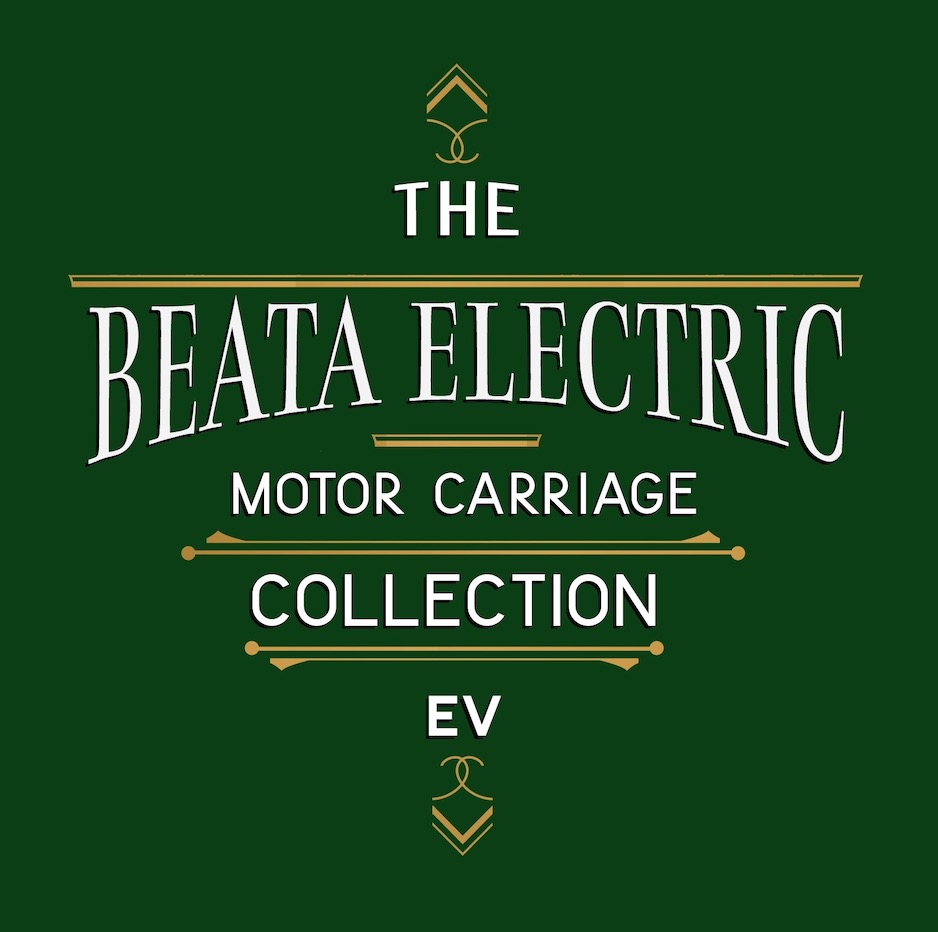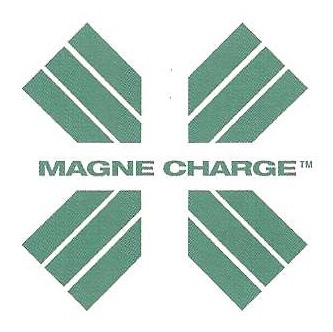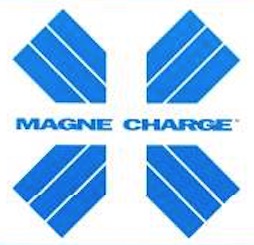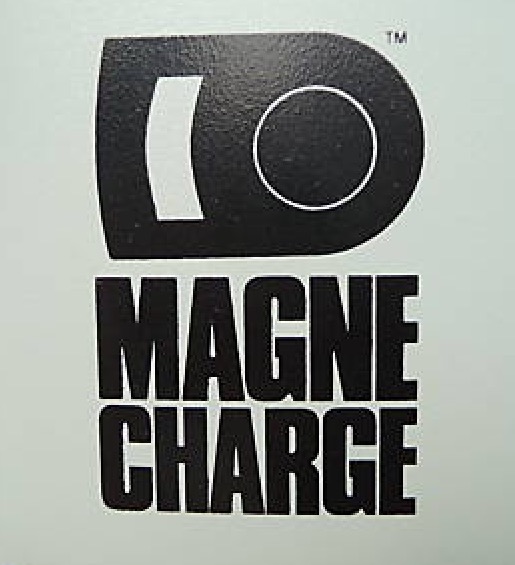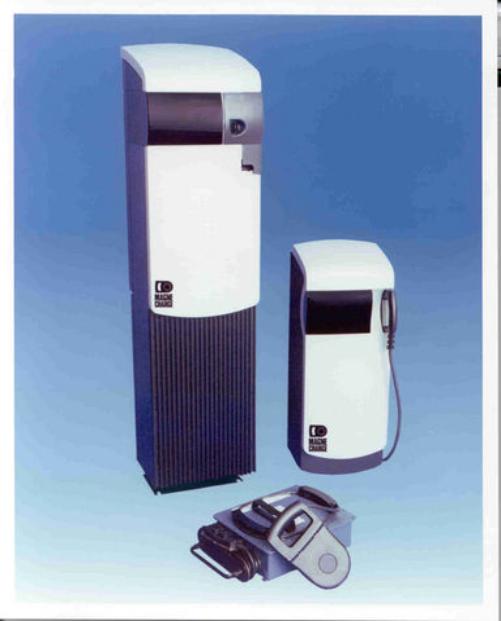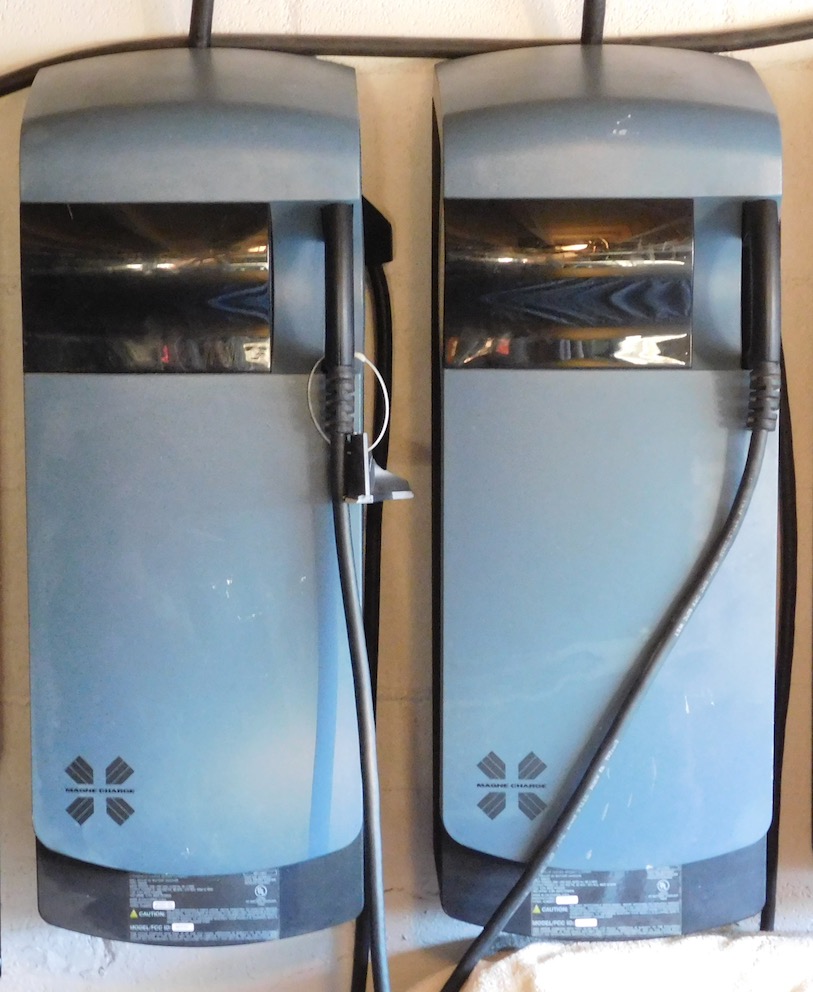
Hughes / GM Magne Charge
Inductive Paddle Chargers
===
LPI (Large Paddle Inductive)
1993 - 1994 25kW (thin paddle)
1996 - 2000 6.6kW (thick paddle)
SPI (Small Paddle Inductive)
2000 - 2003 6.6kW
===
Magne Charge is an inductive charging system
developed to provide charging of battery electric vehicles (BEVs).
This system was originally developed by Hughes
Electronics (c1993/4 - LPI thin paddle) and later by General
Motors and Toyota (1995 - 2003 - LPI & SPI). It served
OEM production BEV vehicles including the GM EV1 (1997 -
1999), GM's Chevrolet S10-E (1997 - 1998), as well as the Nissan
Altra EV (1998 - 2003) and the Toyota Rav4-EV (2002 - 2003).
Early Magne Charge systems were also fitted to some Solectra
and USElectric aftermarket vehicles as
options (1994 - 1996).
Early units were produced by Hughes and later by General
Motors through their Delco Electronics subsidiary,
and under license to GM, Toyota developed the SPI configuration
for their production 2002 & 2003 Rav4-EV
vehicles.
Production models produced 6.6 kW versions although a
high-power fast-charge 50kW version was in development when
GM terminated the program c2003. Over the years
the Magne Charge was developed in
two basic versions, a large paddle inductive (LPI) and later
the small paddle (SPI) system.
Magne Charge inductive systems were originally designed to provide
a safe alternative to conductive charging in any conditions
including rain and snow.
Development History
===
It should be noted that a little known early version (c1993) of the
Magne Charger existed, which, although its
appearance/packaging was the similar to later units, it carried
a "thin paddle" design and was used
in pre-1995 Magne Charge equipped vehicles, including
the Impact PrEView LPF test fleet.
The early version thin paddle dimensions were .383" thick x 5.49"
wide (9.7mm x 139mm). These early versions were
recalled c1994 due to over heating, melting and subsequent fire
concerns. See picture 'A'.
The later LPI versions utalized a more robust paddle configuration with
dimensions of 0.61" thick x 5.42" wide (15.5mm x
138mm). Picture 'B' below shows this early GM "Gen 1" unit,
technically the second generation of the GM product,
that would become widely distributed with
the GM EV1 release c1996/7.
The next version, picture 'C', of the Magne Charge units would
become known as "Gen 2" (although technically the third version) and
were ultimately manufactured in two configurations,
1) the "Gen 2" which was a LPI unit with updated electronics and
packaging; and, 2) the "Gen 2+" [Gen 2 plus] units
which were SPI [Small Paddle Inductive] units. Both Gen2
and Gen2+ units utalized the same packaging/case
configuration, with the addition of a Gen2+ logo
on the later SPI units.
Each of these units could be mounted by pedestal or wall mount,
and had an accompanying convienance charger for
emergency 120vac charging needs.
Picture 'D' below is an example of the final configuration
of the Mange Charge units, and is designated as
a "TAL" unit as designed & manufactured under license from GM
by Toyota for their 2002 & 2003 production Rav4-EVs
TAL stands for Toyoda Automatic
Loom Works, Ltd., a subsidiary of TMC. These units could also
be wall or pedestal mounted and originally came
in a LPI configuration, but were converted to the Toyota
standard SPI configuration in 2002. Copied below is a photograph
of the LPI and SPI paddles for comparison.
Although the original Hughes and GM developed
LPI units communicated between the base station (off- vehicle 'gas
pump') and the on-vehicle components via RF communications,
the Toyota later developed SPI units utilized IR
communications. The addition of IR communications is the
reason for GM's development of its Gen2+ units.
Although all the SPI units are reverse engineered to accommodate
both RF & IR communications, LPI units are only
RF based. Therefore a SPI unit can charge an LPI vehicle
but not vice-versa.


